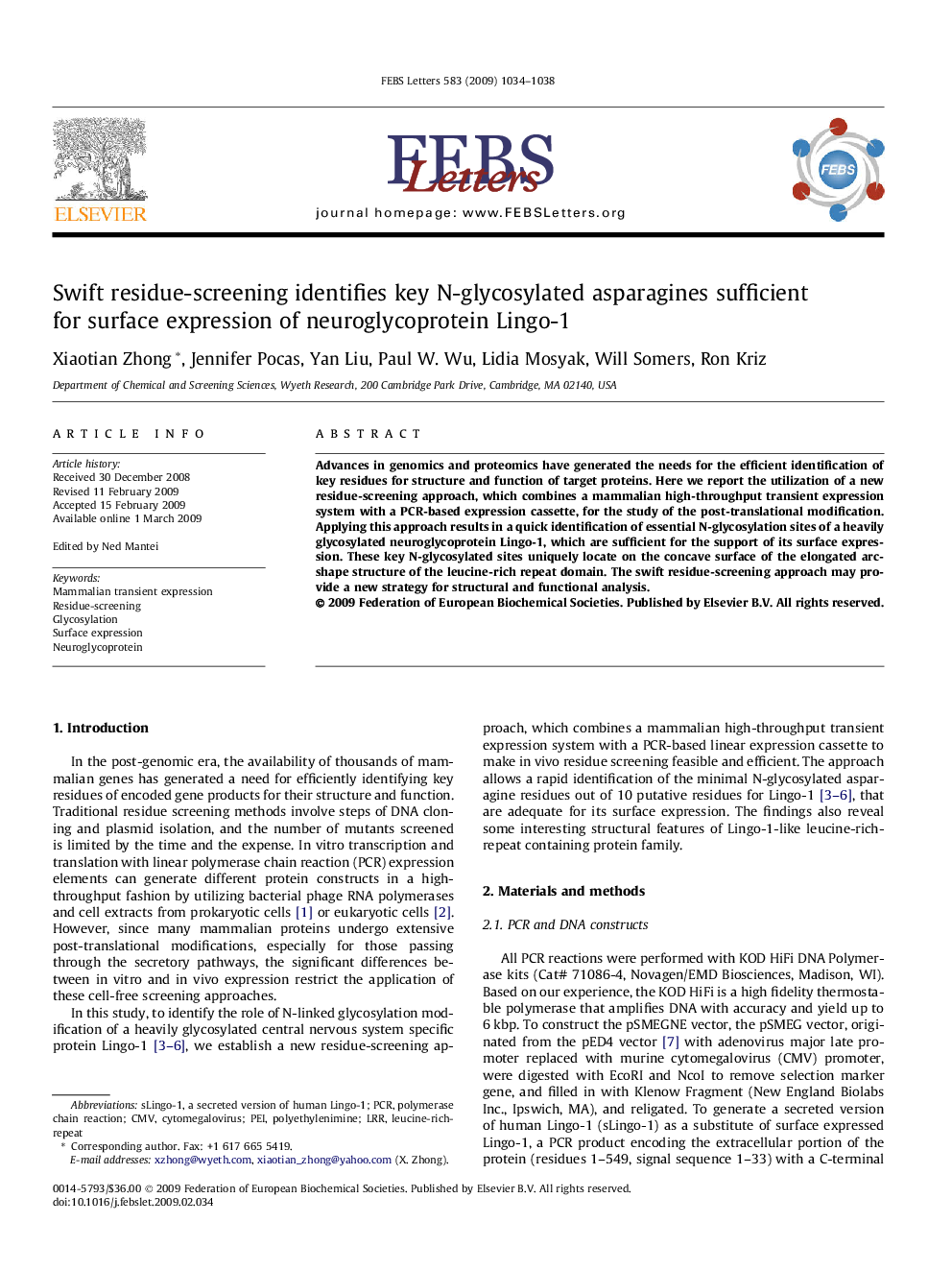| Article ID | Journal | Published Year | Pages | File Type |
|---|---|---|---|---|
| 2048665 | FEBS Letters | 2009 | 5 Pages |
Advances in genomics and proteomics have generated the needs for the efficient identification of key residues for structure and function of target proteins. Here we report the utilization of a new residue-screening approach, which combines a mammalian high-throughput transient expression system with a PCR-based expression cassette, for the study of the post-translational modification. Applying this approach results in a quick identification of essential N-glycosylation sites of a heavily glycosylated neuroglycoprotein Lingo-1, which are sufficient for the support of its surface expression. These key N-glycosylated sites uniquely locate on the concave surface of the elongated arc-shape structure of the leucine-rich repeat domain. The swift residue-screening approach may provide a new strategy for structural and functional analysis.
